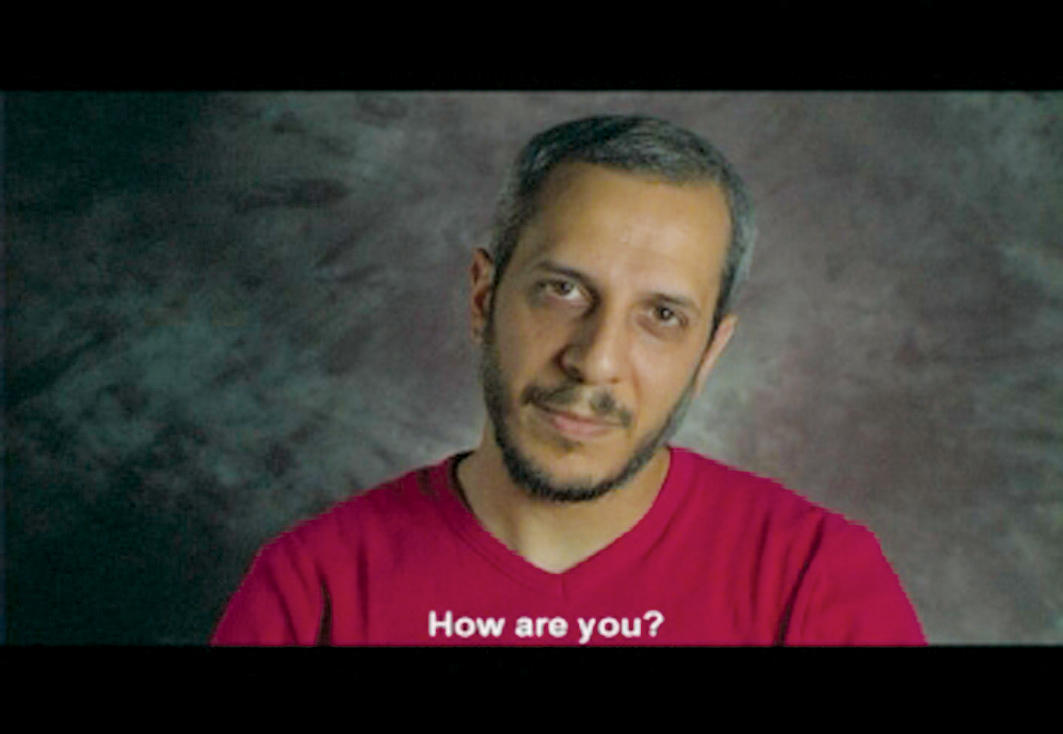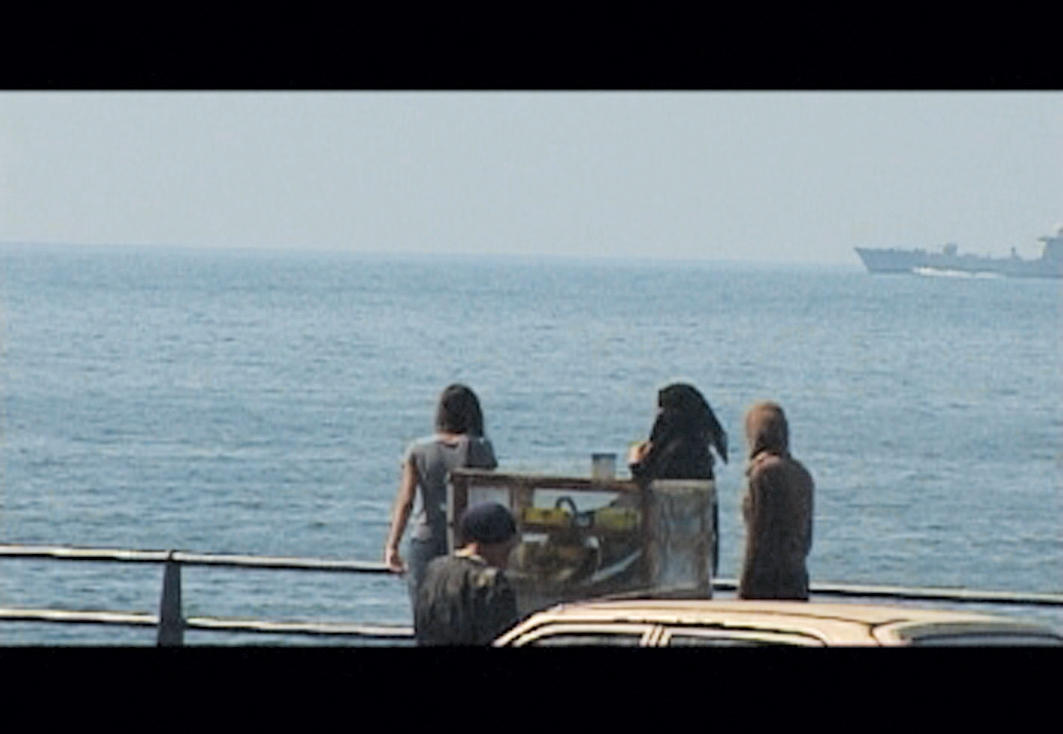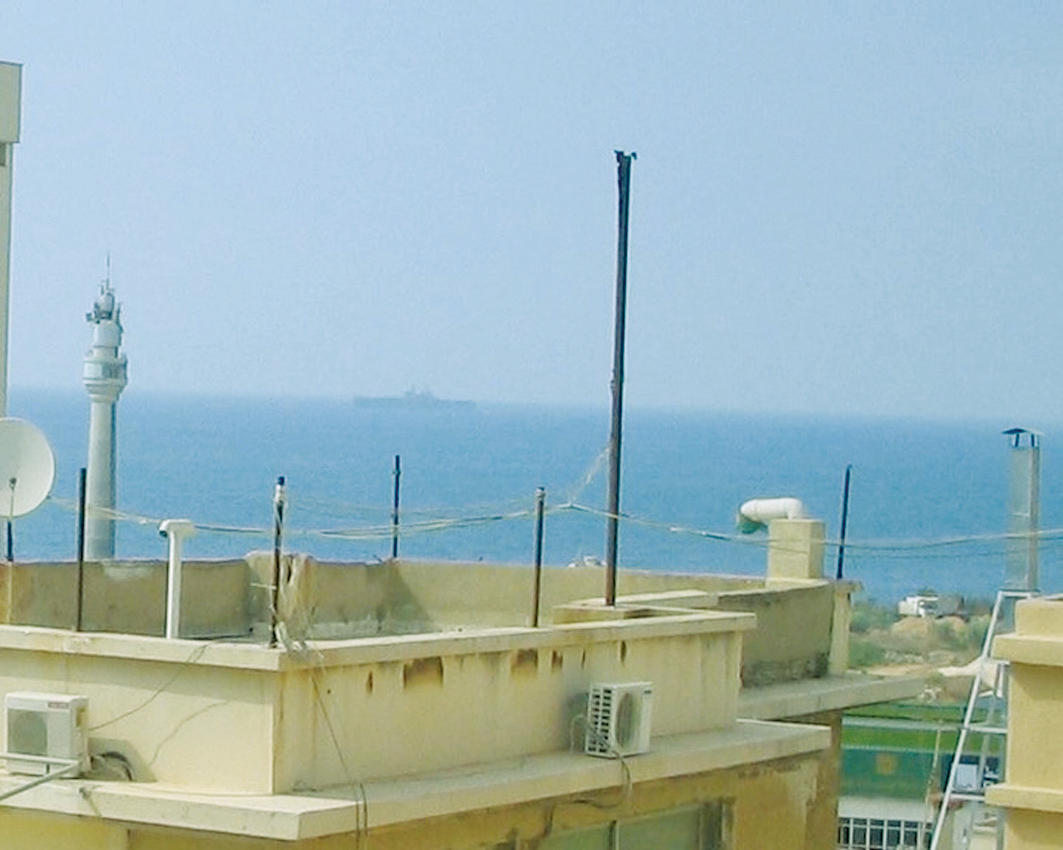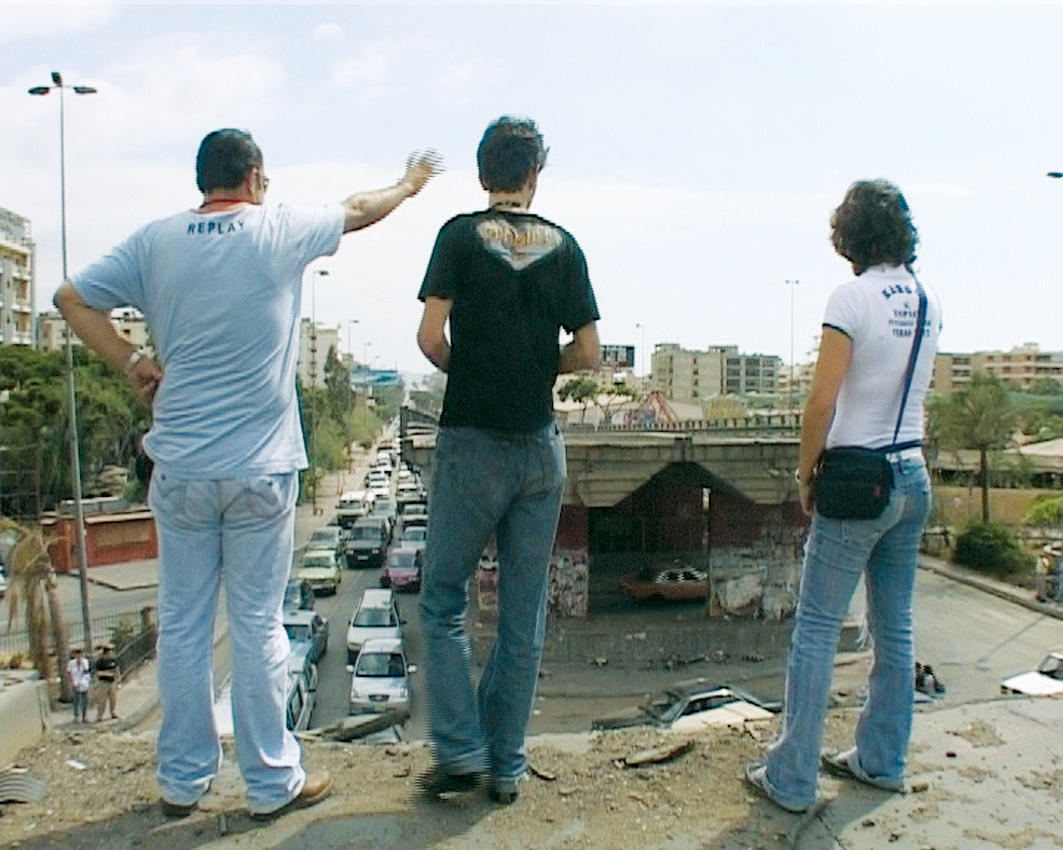
Ayam Beirut Al-Cinema’iya
September 16–23, 2006
“They will try to come, even if the war is still going on,” explained Remi Bonhomme, guest liaison for September’s Ayam Beirut al-cinema’yia (Cinema Days of Beirut), as we sat in one of the city’s newest bars. Not even war can stop Beirutis from going out. During the early days of the Israeli bombardment, Club Social sent out a mass text message, announcing that it was still open and reminding patrons that the underground venue was safer than their own high-rise apartment buildings.
It was with this approach — one part resilience and one part denial — that the people at filmmakers cooperative Beirut DC made the last-minute decision to hold the festival as planned, despite circumstances. The festival was not only a distraction from the daily news and ongoing uncertainty and violence, but also a form of cultural resistance. Basem Fayed, a local documentary director and contributor to one of the festival’s short film programs, described it as “a way to say that we, as filmmakers, are also fighting back.”
Ayam Beirut — this was its fourth year — is gaining a reputation as a well-organized, grassroots festival providing support for independent Lebanese and Arab films. Organized in a month, this year’s event managed to screen 40 films (down from the usual 100), and a special section, Videos Under Siege, was added to give voice to recent events. These 20 short films ranged from 45-second cellphone videos to deconstructed visual poems, many of which spoke directly to foreign audiences — those outside Lebanon looking in. From Beirut, to Those Who Love Us, produced by a group of Beirut DC members and collaborators, opened with the haunting vocals of Reem Khcheich and layered muted portraits with a collective narration: a somber and perfectly tuned antidote to, and criticism of, the short attention span of international news bulletins. Lena Marjeh’s Drawing the War, originally produced in 2003, sketched the narrative of childhood fears amid the memories of war, using a basic but evocative animation technique that succeeds in pulling three-dimensional emotions from the simplest of lines and ink drops.

Even in the films programmed before the events of July 12, the shadow of war was present. The opening night world premiere of Lebanese director Michel Kammoun’s Falafel explored the wounds that remain open 15 years after the end of the country’s brutal civil war and now find a new context in today’s Lebanon. Oday Rasheed’s Underexposure, undoubtedly one of the festival’s best films, was shot in the days immediately following the fall of Saddam Hussein’s regime in Iraq. The central question of the film — how to pick yourself up as the post-war dust settles — was magnified by the real-world circumstances in which the film was shot, and in which it was then screened in Beirut.
In the end, it was impossible to separate the festival from the war. A handful of guests, both Arab and international visitors, toured Lebanon’s southern border, the area hardest hit during the war, and later made their way to the suburbs of Beirut to witness Hizbullah’s “victory rally” – all filming and photographing along the way. Some were interested in politics, others wanted to show their support for the ordinary people of Lebanon, but most simply wished to document — and be a part of — what was a surreal and most unlikely film festival.

Beirut International Film Festival
October 4–11, 2006
Film festivals tend to reflect the personalities of the cities that host them. The Cairo International Film Festival evokes the well-meaning chaos of that city as well as its status as the capital of Arabic-language filmmaking. The Dubai International Film Festival mirrors the emirate itself — shiny and new, solvent and star-studded, with foreigners playing a conspicuous role in the staging and the viewing of the films.
And so it is with the Beirut International Film Festival (BIFF). One in a bouquet of little festivals — including Ayam Beirut Cinema’iya, Née à Beyrouth, Docudays, the European Film Festival — of about the same size and with overlapping interests, BIFF could be a metaphor for Lebanon’s fractured polity or, if you prefer, the city’s spirit of individual initiative.
BIFF’s history also reflects the contingency of Beirut’s cultural life. Founded in 1997, the festival ran for two consecutive years before deciding to go biannual. Funding difficulties stymied the 2000 edition, and financial and political instability have conspired against it ever since. BIFF became MEFF (the Mid East Film Festival) a couple of years ago when it became associated with the Beirut Film Foundation, only to revert to its original name just before this year’s festivities began. So BIFF 2006 was the festival’s “seventh edition,” though the festival has only run three times.
Given that this year’s festival fell just a couple of months after Israel abandoned its assault on Lebanon, BIFF director Collette Naufal and her international backers (the Lee & Gund Foundation, MakeFilmsNotWar, and the Venice Film Festival’s Marco Müller) are to be commended for bringing it off at all.
That aside, BIFF 2006 was a qualified success. Its slate of twenty films did briefly enrich the cinema culture of the city, but there were organizational hiccups.

As promised, Pedro Almodovar’s Volver opened the festival. It then disappeared, despite a scheduled second screening. Katia Jarjoura’s short Beyrouth Ma Betmout — which follows rappers Kita3 Bey-route’s post-war tour of Dahyeh — wasn’t ready. Stephen Frears’ The Queen simply didn’t arrive, while others, such as Marwan Hamed’s The Yacoubian Building, were missing subtitles — which tended to tarnish BIFF’s claims that it’s an international festival.
Since the advent of Ayam Beirut Cinema’iya and Née à Beyrouth, BIFF is no longer central to the screening of Arabic-language and Lebanese films. Still, it’s important that work like Jarjoura’s Terminator and Hala Abdallah and Ammar al-Beik’s I Am the One Who Brings Flowers to Her Own Grave, enjoy a local outing.
Terminator, which premiered last summer, intends to be a document of the “Beirut Spring” — the Martyrs’ Square sit-in demonstrations of spring 2005 — and a profile of one of its activists, the mock-heroically nicknamed Terminator of the title. In effect, it’s a study of political naiveté and disenfranchised masculinity. A documentary of a very different kind, I Am the One Who Brings Flowers to Her Own Grave is an encounter with a handful of Syrian women, expatriate and resident, examining their relationship with their country both as it is and as it was. In their case, that relationship isn’t mediated by politics, but by art, poetry in particular.
Other regional festival favorites, such as Jafar Panahi’s Offside and Laila Marrakchi’s Marock, stand little chance of gaining a theatrical release in Lebanon’s commercial cinemas — likewise for lauded international independents 13 (Tzameti), by Georgian director Géla Babluani, and Bent Hamer’s Factotum.
The launch of the Metropolis art house cinema in July has gone some way toward diversifying Beirut’s film scene, although the cinema, which opened the day before the Thirty-Four-Day War started, has been struggling with the same uncertainties as BIFF — a struggle compounded by its being an ongoing concern rather than an annual event. Naufal has already begun planning BIFF 2007. It will remain a compact gathering, she says, with the major addition of a competition for Arabic films.